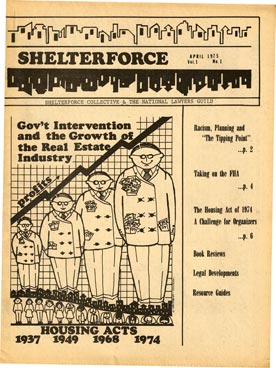The first and most important battle organizers face is working with members to build an independent power base. Building an organization, and forcing a target to deal with your organization, is crucial – and often, the opposition understands this as well as the organizer. Nowhere is this more important than in tenant organizing in public housing, where some Housing Authorities are ready to use every trick in the book to prevent tenants from building independent organizations.
Indeed, ACORN Tenant Union (ATU) members, who have been building independent tenant organizations in public housing over the last two years, have faced many of the same challenges workers encounter when organizing and fighting for unions. Like employers, housing authorities have responded to organizing efforts in a variety of fashions, but rarely with simple acquiescence.
In Oakland, as tenants working with ATU began organizing drives in various developments, reaction from Oakland Housing Authority (OHA) covered the spectrum of responses familiar to all organizers: beginning with sweet-talking offers of “collaboration,” moving on to obstructions designed to wear down the organizers and members, then outright intimidation, and finally active counter-organizing by OHA staff. The successful ATU organizing drive at Chestnut Court in West Oakland is a case-in-point.
OHA is touted by HUD as one of the better-run big-city public housing authorities, due to such factors as high rates of rent collection and low vacancy rates. Well, as Oakland ATU members say, the only thing you can count on “Housing” to do on time is collect rent or mail a three-day notice that rent is overdue.
Between 1973 and 1995, the OHA (alone among all the big-city housing authorities in ACORN’s experience) had not officially recognized a single tenant organization in any of Oakland’s public housing. This status, recognized by HUD regulations, allows tenant organizations access to significant HUD grants for developing councils, as well as added leverage if a housing authority ignores a group’s demands.
Chestnut Court tenants began to hold organizing committee meetings in early 1994. Everybody had horror stories to tell: having to stay with friends for weeks because of a gas leak, bailing out buckets of water from a leaky sink every day for months, roach-infested walls that all the cleaning in the world wouldn’t eliminate. Tenants talked about millions of dollars in HUD modernization funds that went unspent while their buildings crumbled. The target was clear, as was the strategy. The OHA was failing to meet some of the most basic standards of health and safety. Until tenants organized and demanded action, conditions were not likely to improve.
Tenants starting knocking on doors, holding house meetings, and building their organization. Within days, OHA staff began to approach ATU members, talking about wanting to work together (“we’re all on the same side here”). ATU leaders knew which side they were on, and the OHA staffers were shown the door.
Several months into the organizing effort, ATU leader Dorothy Vance received a visit from OHA’s director of resident and community services. The approach was not subtle. This representative said that if tenants began working with the housing authority, instead of the union, OHA could make Chestnut Court a better place to live. A long-discussed youth program could be started – but only if tenants dropped the union. Another active member, whose living situation had been the same for years, received a lease violation notice concerning the number of people in her apartment. An OHA “organizer” was also sent to talk to Chestnut Court residents.
Vance describes her reaction to these advances: “I couldn’t believe they were talking about programs for our kids to try to buy us off. They always say they’re going to do things. They’ve promised us things for years and none of it has been done. So when we started organizing our damn selves, then Housing comes along and says they want to work with us. Most of us have been living in Housing too long to fall for that.”
The tenants elected officers, held monthly meetings to plan their campaigns, and asked the OHA Board of Commissioners for recognition in March 1994. OHA, claiming the election hadn’t been run right, refused to grant recognition. In May, ATU held elections again, this time with the League of Women Voters present to vouch for the fairness of the election process. Again, OHA withheld recognition.
In the meantime, ATU members turned up the heat. The tenants marched into OHA offices demanding repairs and pest extermination. They took city officials and the news media on a tour of their apartment complex. They disrupted meetings of the OHA Board and public hearings on the use of HUD modernization funds. Actions yielded results. Long-awaited repairs were made, and OHA committed $427,000 in modernization funds for security gates and more lighting.
All the while, OHA continued its efforts to de-legitimize ATU, despite clear-cut HUD regulations requiring housing authorities to recognize and deal with tenant organizations. ATU leaders celebrated their victories on modernization funds, but kept up the fight for recognition. In Dorothy Vance’s words: “What they give us with one hand they can take back with the other – unless they deal with us as an organization that represents the tenants of this development.”
Finally, in February 1995, the OHA bowed to residents’ demands and granted recognition to the Chestnut Court Resident Council/ATU.
In providing this formal mechanism for recognition, HUD regulations legitimize tenant organizations in public housing in particularly clear-cut fashion. Yet such recognition is no less important in other communities. Whether the government or a corporation, the target must be forced to recognize the organization as a legitimate vehicle through which residents can make demands and negotiate. Leaders and organizers need to keep this issue at the top of their agenda, as did the tenants at Chestnut Court, who have worked to build an independent base of power that establishes them in a position of strength.




Comments